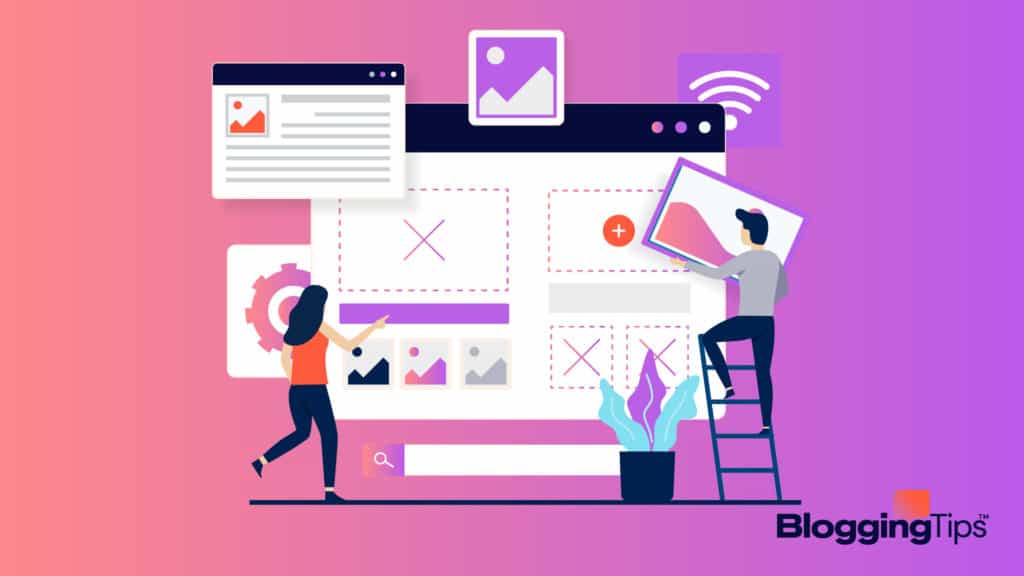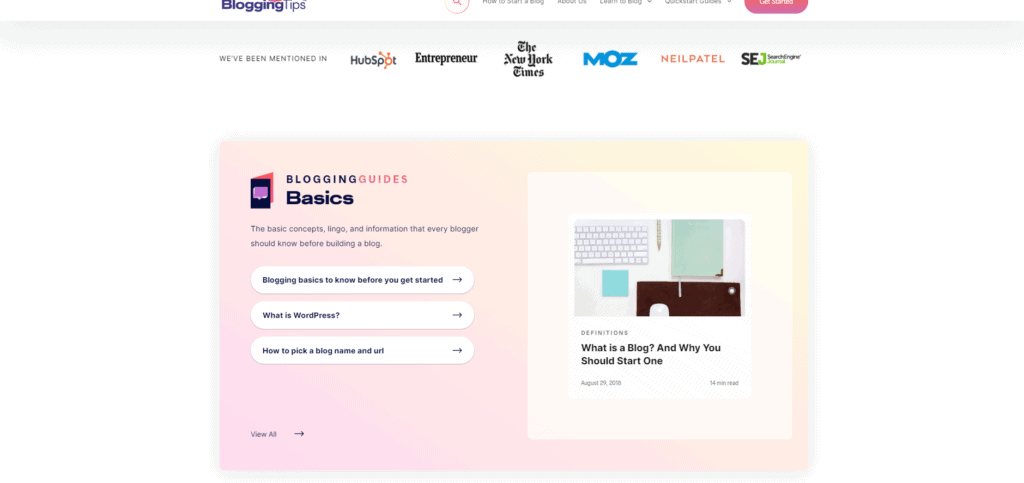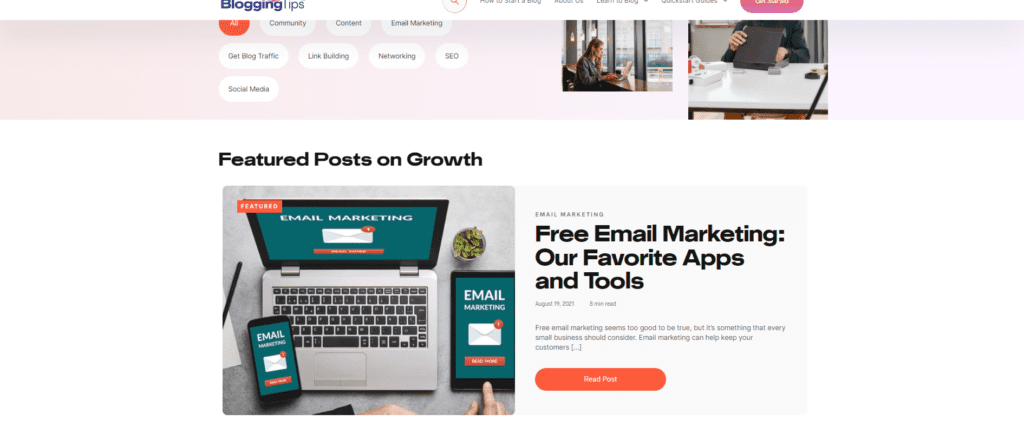Blogs and websites tell a story or provide information about a product or service, so catching the attention of visitors is generally the primary goal.
One way to do that is with a featured post.
If you’re running a website or working at a digital marketing job, at some point you will probably be wondering what featured posts are and how they work.
In this post, we’ll take a look at what featured posts are, and when you should use them.
Contents
What Is Featured Content?
Featured content is the highlighted text, images, or posts on a page that entice visitors to read on.
Feature quality content to get new visitors when people view it and share it with others.
Featured posts are a version of that type of featured content.
What Is a Featured Post?
A featured post is a blog post that is featured on your home page or in another prominent location on your blog.
Featured posts are typically your most popular or most recent articles, and they can help new readers discover your best content.
They are a great way to draw attention to your best content and help new readers find your most popular articles.
While these types of posts are well-known to bloggers, they also appear on eCommerce platforms, social media platforms, email templates, and anywhere else that provides digital content.
Types of Featured Posts

What Is A Featured Post on a Blog?
When you visit a blog, you may see a post that is marked “sticky,” “featured,” or labeled with a pushpin icon.
This is a featured post.
Usually, the featured post tells more about the blog or offers the knowledge for which most people visit the blog.
It may have a different color background or maybe be in a box by itself, or it may welcome visitors or be an announcement.
Most blogs can feature only one post at a time, so make the featured post count.
What Are Featured Posts in WordPress?
A featured post in WordPress is a specific post that may not be one of your recent posts and is shown in the featured posts section of the main content on your website.
You may need a featured post plugin or a different method to get the featured post to display correctly.
Examples of Featured Posts on Our Website
On bloggingtips.com, we have several places where we produce featured posts.
The first is on our homepage.

As you can see, there are callouts for specific posts that we’d like our readers to take note of.
We think the posts we have called attention to are some of the most helpful and interesting pieces of content on our blog.
Second, we’ve included featured posts within our category archive pages.

As you can see from this example from our website Growth archive page, we’ve included another callout for some helpful resources that we think are most interesting from this category.
What Is a Featured Post on Instagram?
Instagram does not offer a featured post option, but Facebook (which is the same parent company) does.
To set a featured image or gallery on Facebook, choose “Featured” when looking at your own page (not your news feed).
You can then use photos that you have already uploaded or you can upload new ones.
Give your Featured album a title, and then all your friends can see it.
What Is a Featured Image in a WordPress Post?
A WordPress featured image is the image within a post that is associated with that post when looking at a list of posts.
It is shown at the top of the posts page in most WordPress theme layouts.
Sometimes, the featured image can be used to show the theme or type of the post.
Custom post types can be paired with featured images to organize the blog and its layout.
If the WordPress theme you chose does not support featured images, you can get plugins that will add this functionality.
Choose an image that illustrates the message in the post to help readers know what to expect.
Characteristics of a Featured Post
Choosing the right post to feature can be challenging.
Choose a blog post or write a new post that includes the following characteristics, for best results.
1. Engaging
A post that promotes discussion and encourages interaction will draw in more people.
Using a descriptive post title can encourage a person to click through and access the content.
For example, people are concerned about the security of a program.
They will be more likely to click on a post titled “Essential Security Features” than one that says “Features” alone.
2. Good Length
It is difficult to say what the exact length should be.
Generally, between 500 and 1,500 words are the recommended length, but it depends on the content.
It may be possible to fully express a thought or concept in fewer words, or it may take more words to do it justice.
Focus on quality, not quantity.
- Related: How long should a blog post be?
3. Readable
If your visitors are unable to read your content, it will not matter how much content you have.
Avoid personal information and confusing embedded content and stick with simplicity.
4. Relevant
Avoid content that is no longer relevant.
Your readers will lose interest quickly without fresh content that relates to their life.
5. Useful
For a user to find value in your content, the content needs to be useful.
Plenty of websites offer random strings of keywords in an attempt to boost traffic, but people get irritated with sites like that.
Offer data or instruction that they can use.
Benefits of a Featured Post in WordPress Sidebar
You can feature a post in the sidebar widget area using a WordPress plugin or the basic functionality that comes with WordPress hosting.
If you use a featured tag on a few top-quality posts, you may be able to use a module to rotate the featured item.
Some website templates have code included that allows you to use a shortcode to embed a featured post into other pages.
If you have an analytics plugin, you can see which of your featured posts attract the most engagement.
Wrapping Up
Featured posts on a blog or website draw attention to images or content that offers value to the reader.
The visitor might overlook the content if it is not set apart by featuring it.
Use simplicity, readability, and relevance to create a useful post.
Choose relevant images to encourage your visitors to engage with your content.
Place the post on your main page or in the sidebar to keep it visible to your visitors.





